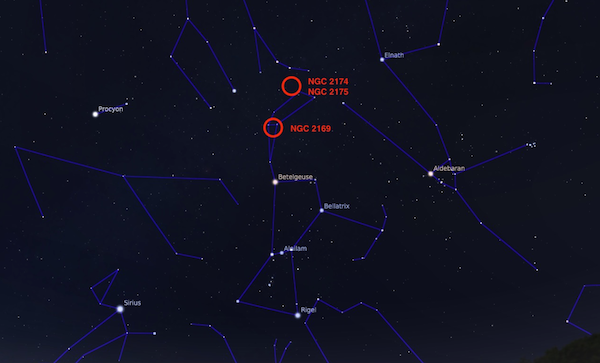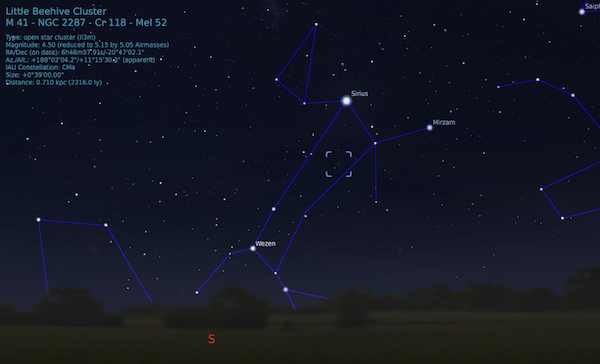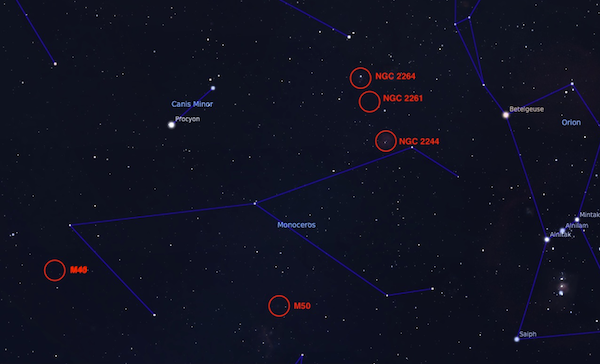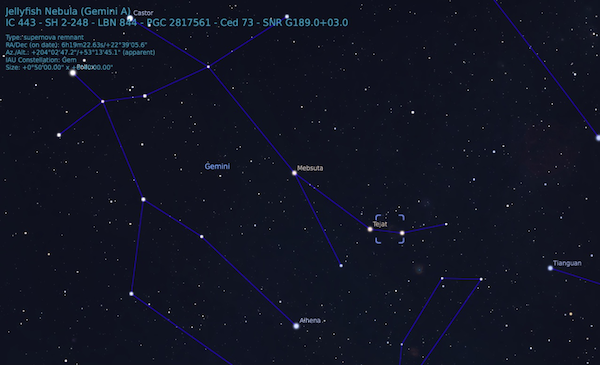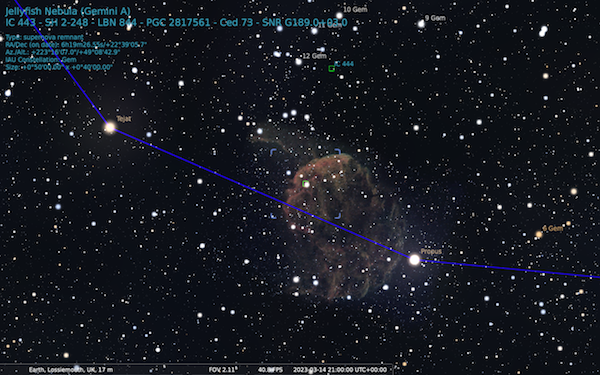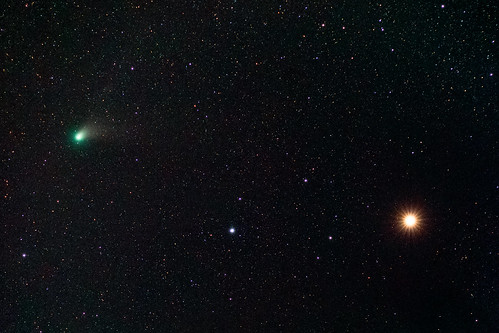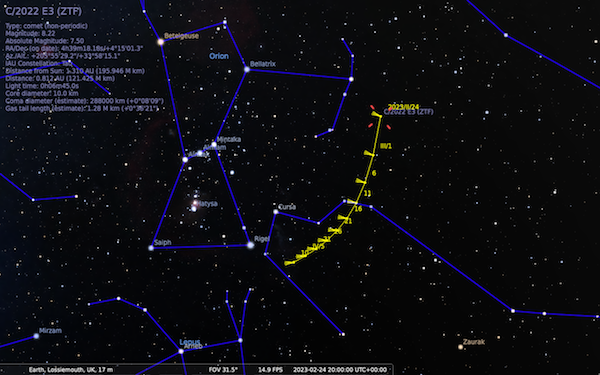Moray Sky at Night March 2023

Moon Phases March 2023
Full Moon 07th,
Last quarter 15th,
New moon 21st,
First quarter 29th March ’23.
Image courtesy of https://moonphases.co.uk
The Planets
Mercury too close to the Sun to be seen. Reaches superior conjunction, on the far side of the Sun on 17th March.
Venus In the evening sky, is very bright (mag. -3.9 to -4.0), but too close to the Sun to be easily visible.
Mars Initially in Taurus, mag 0.4, but moves into Gemini and fades to mag. 1.0.
Jupiter In Pisces, but too close to the Sun to be readily visible this month.
Saturn In Aquarius and too deep in the morning twilight to be seen.
Uranus In Aries at mag. +5.8.
Neptune In Pisces at mag. +8.0, comes to conjunction on 15th March.
MORAY’S NIGHT SKY – 15th March 2023 @21:00 hrs GMT
Thanks to Chris Peat at Heavens-above.com for use of the star map
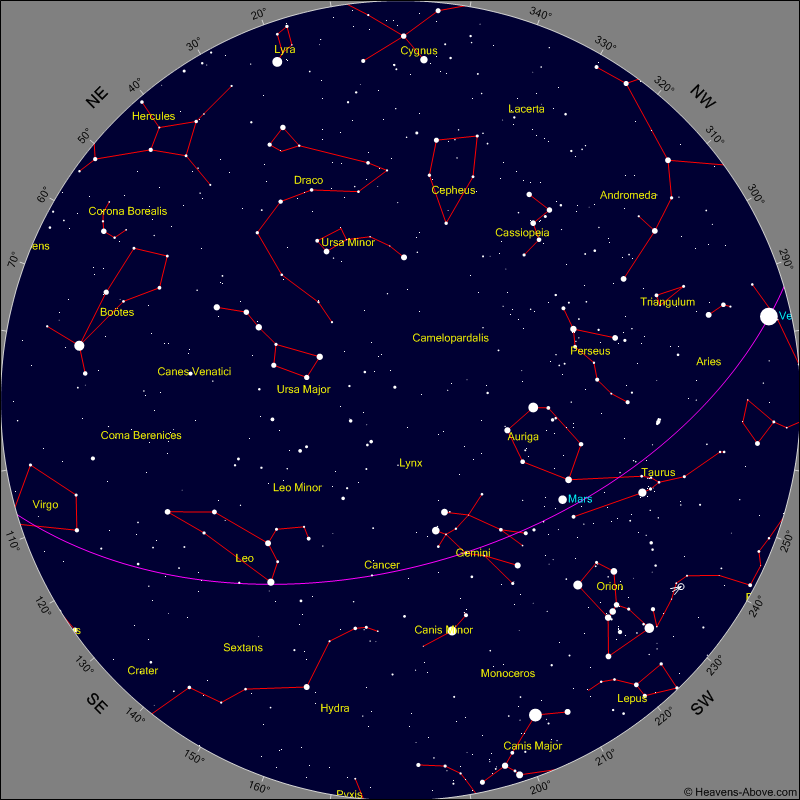
Meteor Showers
There are no major meteor showers in March 2023.
March Overview
03 Mar, 15:00 GMT – Moon at apogee ie furthest from earth (405,880km)
20 Mar, 21:24 GMT – Northern vernal equinox – First day of spring
19 Mar, 15:12 GMT – Moon at perigee ie closest to earth (362,697km)
26 Mar, 01:00 GMT – British Summer Time begins (clocks go forward to 02:00)
31 Mar, 11:17 BST – Moon at apogee ie furthest from earth (404,919km)
After such a feast of planets through the autumn and Christmas, things slowly deteriorate for enthusiasts of the solar system. However, the deep sky in all its winter glory remains, with wonderful things to enjoy during the long nights before British Summer Time resumes on 26th March. Although the Moon is generally high in the ecliptic, there are windows of opportunity in the early days of February and March to survey the deeper Universe.
Orion still dominates the southern aspect in the early evening throughout March and remains our best guide to the late winter sky. Many observers will have feasted on the marvels within the hunter’s boundaries, but exploring the lesser-known objects can be fun. Take for example the Monkey Head Nebula NGC 2174/5, a cluster enveloped in emission nebulosity in the north of the constellation, towards Gemini. Nearby you may enjoy other clusters such as The 37 Cluster, NGC 2169.
To Orion’s south-east, Sirius, the brightest star in the night sky due to its relative proximity of 8 light years, is unmistakable. Just follow Orion’s belt stars down to the left to locate this gem, its light fragmented chromatically by the Earth’s atmosphere. At magnitude –1.4, Sirius dominates the southern sky, and directly below is the fine open cluster Messier 41 (M41), easy in binoculars and lovely in small telescopes. There are several other bright stars in this region, although it is commanded by Sirius. Mirzam (beta Canis Majoris) lies just to the west, its magnitude of +1.9 being compromised by atmospheric extinction.
Moving north of the large dog but south of the smaller canine (Canis Minoris, and its 1st magnitude star Procyon) we encounter Monoceros, the elusive unicorn. Devoid of bright stars, the mythical beast is rich in interest for the deep-sky enthusiast as the winter Milky Way runs through it, bearing dark and bright nebulae as well as many open clusters. Highlights include the Rosette Nebula (NGC 2244), the Christmas Tree Cluster crowned by the Cone Nebula (NGC 2264), the brightest variable nebula NGC 2261 (Hubble’s Variable Nebula, associated with the Young Stellar Object R Monocerotis) and Messier 50 (M50).
Hinting that spring is on the way is Messier 48 (M48), being flicked away by the unicorn’s tail. This open cluster is at the western extreme of the sinuous water snake, Hydra. The serpent terminates east of Spica in Virgo, so straddles the transition of winter into spring. Messier 48 itself is just naked-eye from a dark site and covers the same area of sky as the full Moon, with a fairly conspicuous core and less well-defined outer regions of fainter members.
Continuing our sweep north we encounter the twins Pollux and Castor. Gemini is a grand constellation, with two streams of stars representing each twin. Although the star Pollux (beta Geminorum) is rather brighter than his brother Castor (alpha Geminorum), the latter is the more interesting being a multiple system. The members of the bright pair are both spectroscopic binaries, with a more remote spectroscopic pair of identical red dwarfs that eclipse one another. Castor Aa (magnitude +2.0) is currently easily split from Castor Bb (magnitude +2.8) at 5.6 arcseconds. They have been separating from a minimum of 1.5 arcseconds since 1965. They were the first pair to be regarded as a true binary, orbiting one another over 467 years. Both are white A-type stars with red spectroscopic companions. At some distance lies Castor Cc, a spectroscopic pair of eclipsing red dwarfs, combining to make magnitude +9. Both components are intrinsically variable due to starspots and flares. Known as YY Geminorum, the orbit around the system is painfully slow – perhaps 10,000 years or more.
The twin Castor also boasts the finer stream of stars, straggling westward and terminating in mu and eta (Tejat and Propus, respectively). Between these two red stars lies a rare supernova remnant, IC 443. Known as the Jellyfish Nebula, the brighter portion nestles near Propus, but deep images show a much fainter extension that lies above Tejat. The brighter western part is a difficult visual target but is imaged easily enough, especially in hydrogen-alpha.
March’s Object Challenge
This month’s challenge yet again has to be Comet C/2022 E3 (ZTF). Comets don’t come around too often and it would be good to see more member’s images of this one, if it’s still around! – See the information in this month’s Comet Section.
Comets
Comet C/2022 E3 (ZTF) is fading fast and no longer a circumpolar object. It is in the southern regions of Taurus and moves into Eridanus on the 3rd of March. Long-exposure imaging and telescopes are the order of the day (well, night!) now.
For up-to-date information look at www.heavens-above.com or www.in-the-sky.org and you can pinpoint its location.
The yellow line shows the path of the comet from 24 Feb to 15 Apr ’23, from top to bottom.
The increment marks on the line are 5 days apart.
ISS
The ISS is a morning object from 18th February until 08th March ‘23, after which it won’t be visible for us here.
Then from the 17th March it becomes visible in the evening sky until the 30th of March ‘23.
For more information on all things celestial, go to https://www.heavens-above.com/PassSummary.aspx?satid=25544 If you create a free account and enter your location it gives you a precise timings and starmaps.
Another website for astronomy information at: www.in-the-sky.org
Clear skies!
Mick

